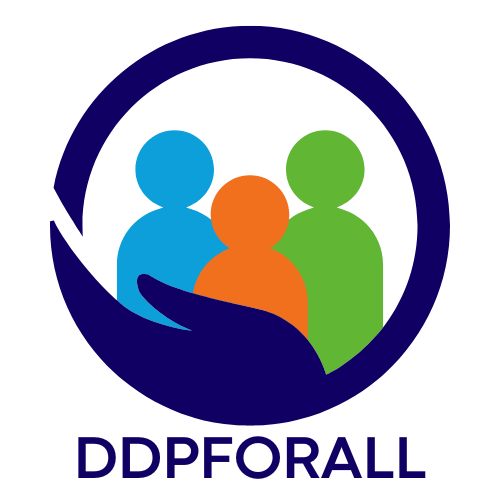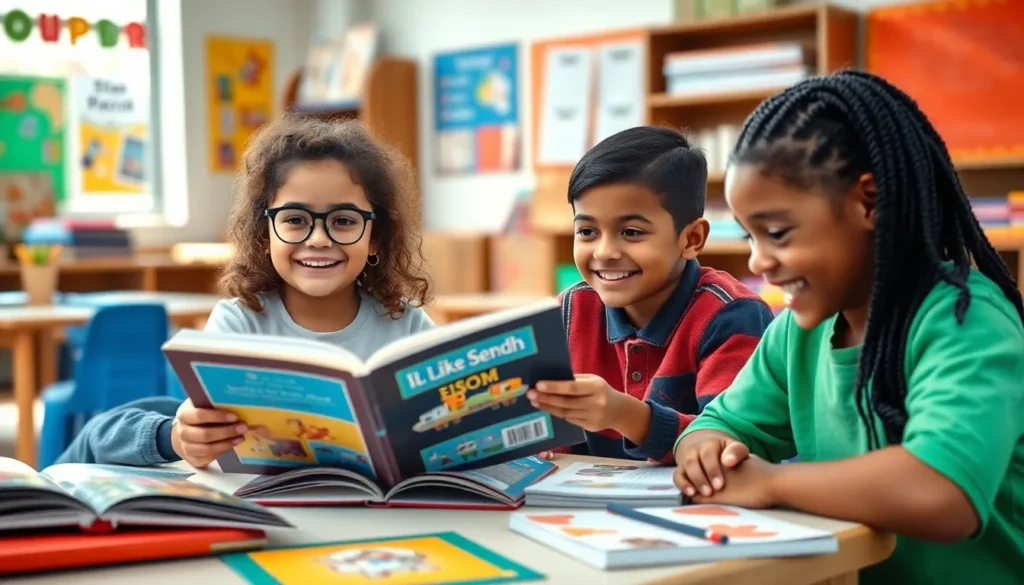Table of Contents
ToggleReading development isn’t just a stroll through the pages of a picture book; it’s more like a thrilling rollercoaster ride through the amusement park of literacy. From the moment a child first recognizes that squiggles on a page can tell a story, a fascinating journey begins. But with so many theories and frameworks out there, it can feel like trying to find the right book in a library that’s been turned upside down.
So, which of the following best outlines this intricate process? Whether it’s phonics, whole language, or a blend of both, understanding the steps involved can transform a child’s reading experience. Buckle up as we dive into the essentials of reading development and uncover the secrets to fostering a lifelong love for reading. After all, who wouldn’t want to turn the page on confusion and leap into clarity?
Understanding Reading Development
Reading development involves several interconnected stages that contribute to a child’s ability to understand and interpret written text. Phonemic awareness represents one crucial aspect of this journey. Children learn to identify and manipulate individual sounds in words, paving the way for stronger decoding skills.
Next, phonics emerges as a fundamental tool. This approach teaches children how to connect sounds to letters, which helps in sounding out unfamiliar words. Mastery of phonics builds confidence as children progress in their reading abilities.
Fluency follows phonics. At this stage, children refine their reading speed and accuracy. Frequent practice through various texts enhances their ability to read smoothly, which is essential for comprehension.
Comprehension then takes center stage. Children begin to extract meaning from texts, making connections to their personal experiences. Engaging with instructional strategies, like asking guiding questions, supports this critical skill.
Vocabulary development also plays a vital role in reading growth. Exposure to new words enriches a child’s language skills. This expanded vocabulary not only aids comprehension but also helps children express ideas more clearly.
Finally, engagement with literature cultivates a love for reading. Encouraging exploration of various genres and topics fosters curiosity and enjoyment. When children find pleasure in reading, they often become lifelong learners and avid readers.
Understanding these stages helps parents and educators support children’s reading journeys effectively. Each phase builds on the previous one, creating a comprehensive framework for successful reading development.
Stages of Reading Development

Understanding the stages of reading development is crucial for supporting children’s journey toward literacy. Each stage lays the foundation for the next, enabling a comprehensive progression in reading skills.
Emergent Literacy
Emergent literacy signifies the early phase where children become aware of printed language. During this stage, they engage with books through storytelling and recognize that print conveys meaning. Recognition of letters and sounds also begins here. Children may scribble or mimic writing as they experiment with written expression. Encouraging play with letters, such as through alphabet games, enhances this engagement. Simple literacy experiences at this point form the groundwork for future reading success.
Early Literacy Skills
Early literacy skills further refine a child’s reading capabilities. At this point, phonemic awareness becomes essential, as children learn to blend and segment sounds in words. Identification of sight words begins, making reading more fluid. Instructional strategies like interactive read-alouds support comprehension as children relate texts to their lives. Activities promoting vocabulary growth, like storytelling and discussions, reinforce these skills. This stage sets the scene for the shift toward more structured reading.
Fluent Reading
Fluent reading marks the transition to independent reading. This stage emphasizes accuracy, speed, and expression. Children gain confidence as they read aloud with proper intonation and phrasing. Regular practice through shared reading experiences cultivates fluency. Comprehension continues to grow as they explore diverse genres. Engagement with varying texts allows children to connect literature with their interests. This stage serves as a critical point for developing lifelong reading habits.
Factors Influencing Reading Development
Various factors significantly shape reading development in children. Understanding these influences can enhance educational strategies and support children’s progress.
Socioeconomic Status
Socioeconomic status profoundly impacts reading development. Children from higher-income families often access more resources, such as books and educational tools, compared to those from lower-income backgrounds. Research shows that early literacy experiences contribute to vocabulary growth. Additionally, economic stability can affect parental engagement in literacy activities. Children in economically disadvantaged situations face more barriers, including limited access to high-quality early education programs.
Educational Environment
The educational environment plays a critical role in a child’s reading development. Schools with well-trained teachers and rich curricular resources promote effective literacy instruction. Class sizes and student-teacher ratios can significantly impact individual attention. Engaging classroom practices enhance children’s motivation and foster a love for reading. Research indicates that supportive learning environments lead to better comprehension skills. Quality early education programs are essential in laying a strong foundation for reading success.
Parental Involvement
Parental involvement significantly enhances reading development. When parents engage in reading activities, they model positive literacy behaviors for their children. Participating in shared reading experiences boosts vocabulary and comprehension skills. Studies show that children whose parents are actively involved in their literacy journey tend to perform better academically. Regular communication between parents and educators also fosters a supportive reading environment. Creating a culture of reading at home encourages children to explore various genres and topics.
The Role of Phonics and Vocabulary
Phonics plays a vital role in reading development. It helps children understand the relationship between letters and sounds, making decoding words easier. This foundational skill fosters confidence in young readers. When children master phonics, they transition more smoothly into fluent reading.
Vocabulary development significantly enhances comprehension. Exposure to new words creates a richer understanding of language. Engaging with diverse texts boosts children’s language skills and opens up their communication abilities. Activities such as interactive read-alouds support vocabulary growth, providing context for new terms.
Fluency builds on the skills gained through phonics and vocabulary. As children practice, they gain accuracy and expression in their reading. Frequent reading experiences, like shared reading sessions, help solidify fluency. Comprehension improves alongside fluency, as children can focus on meaning rather than decoding individual words.
Moreover, the interplay between phonics and vocabulary is essential. Strong phonics skills allow children to tackle unfamiliar words confidently. A robust vocabulary equips them to understand texts better. Together, these elements create a foundation for successful reading experiences.
Encouraging a love for literature is equally important. Engaging with various genres can motivate children to explore reading independently. Finding books that match their interests keeps children invested in their reading journey. This passion for reading not only supports academic achievement but also nurtures lifelong learners.
Reading development is a multifaceted journey that requires careful attention to various stages and influences. Recognizing the importance of phonemic awareness phonics fluency comprehension and vocabulary is essential for fostering strong literacy skills. Each stage builds upon the previous one creating a solid foundation for lifelong reading enjoyment.
Moreover the role of the educational environment and parental involvement cannot be underestimated. By understanding these dynamics parents and educators can better support children’s reading journeys. Encouraging engagement with diverse literature will not only enhance comprehension but also instill a lasting love for reading in young learners. This holistic approach to reading development paves the way for future academic success and personal growth.







